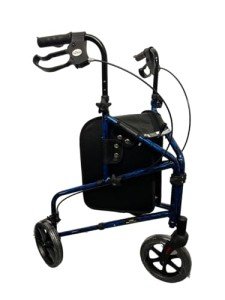5 Killer Quora Answers To Walker With Seat
The Benefits and Features of Walkers with Seats: A Comprehensive Guide
Mobility is a critical part of preserving independence as individuals age or recuperate from injuries. Amongst the various mobility aids offered, walkers have ended up being increasingly popular for their adaptability and assistance. One particular type is the walker with a seat, which supplies both help in walking and a resting place when needed. This post checks out the functions, benefits, and factors to consider of walkers with seats, eventually directing prospective users in picking the best mobility aid.
What Is a Walker with Seat?
A walker with a seat is a mobility aid designed for individuals who might need assistance while walking but also need the choice to rest frequently. These walkers generally include 4 legs, sturdy handles for grip, and a built-in seat that enables the user to take breaks as required. The style of these gadgets differs, providing alternatives that accommodate different preferences and needs.
Secret Features of Walkers with Seats
When thinking about a walker with a seat, a number of key features ought to be taken into account:
- Sturdy Construction: Most walkers are constructed from durable products such as aluminum or steel to ensure assistance and safety.
- Adjustable Height: Many models come with adjustable deals with to accommodate users of different heights, guaranteeing correct posture and convenience.
- Lightweight Design: For simpler maneuverability, numerous walkers with seats are developed to be lightweight yet steady.
- Safety Features: Some come equipped with features such as non-slip grips, locking brakes, and reflective strips for presence and safety.
- Storage Options: Walkers may consist of baskets or trays for carrying individual items, which can boost benefit during use.
Benefits of Using a Walker with Seat
The numerous benefits of a walker with a seat make it an excellent option for numerous people:
-
Enhanced Mobility: A walker with a seat permits users to preserve mobility while offering the essential support to avoid falls.
-
Hassle-free Resting Option: The built-in seat enables users to rest whenever they feel tired, promoting overall endurance and convenience.
-
Improved Confidence: Individuals frequently acquire more self-confidence in their mobility when utilizing a walker that supports them, resulting in higher independence.
-
Posture Support: A properly designed walker encourages users to preserve much better posture while walking, which can assist in reducing back and joint pressure.
-
Social Interaction: A walker with a seat can motivate users to take part in social settings, as they can easily take breaks throughout activities.
Choosing the Right Walker with Seat
Choosing the correct walker with a seat involves considering different aspects to guarantee it satisfies the user’s requirements. Here’s a checklist to assist in picking the best walker with seat:
Considerations for Selection
-
User’s Physical Condition: Assess the physical abilities and limitations of the user. Are they able to manage their weight with the walker? Do they require more stability?
-
Weight Capacity: Ensure that the walker can support the user’s weight comfortably. A lot of walkers have particular weight limitations.
-
Portability: For those who prepare to travel or move frequently, consider the weight and foldability of the walker.
-
User Preferences: Users might have particular choices relating to design, color, or additional features that cater to their way of life.
-
Budget: Walkers with seats can differ in price based on products and features. It’s essential to select one that meets the essential requirements without surpassing the budget.
Table: Comparison of Popular Walker with Seat Models
| Walker Model | Weight Capacity | Seat Height | Adjustable Handles | Rate Range | Bonus Features |
|---|---|---|---|---|---|
| Rollator Walker 1 | 300 lbs | 22 inches | Yes | ₤ 100 – ₤ 150 | Basket, folding design |
| Rollator Walker 2 | 250 lbs | 21 inches | Yes | ₤ 80 – ₤ 120 | Cushioned seat, adjustable backrest |
| Rollator Walker 3 | 350 pounds | 23 inches | Yes | ₤ 150 – ₤ 200 | Locking brakes, rear wheels |
| Foldable Walker 1 | 300 pounds | 20 inches | Yes | ₤ 70 – ₤ 110 | Lightweight, easy storage |
Frequently Asked Questions (FAQs)
1. Can individuals use walkers with seats if they have limited upper body strength?
Yes, walkers with seats are designed to offer support and stability for individuals with different strength levels. Picking a model with sturdy handgrips and brakes can enhance safety.
2. Are walkers with seats ideal for outdoor use?
Definitely. Most walkers with seats are created for both indoor and outdoor use. However, it is suggested to select models with bigger wheels for better maneuverability on outdoor surfaces.
3. How do I keep a walker with a seat?
Routinely inspect the rubber tips for wear, make sure that all moving parts are functioning properly, and tidy the walker to avoid dirt accumulation. If any parts are harmed, change them immediately.
4. How can I enhance my walking capability while utilizing a walker with a seat?
Routine physical treatment and balance exercises can assist improve strength and coordination, assisting in better mobility even when using a walker.

5. Is it possible to change the height of walkers with seats?
A lot of modern walkers with seats feature adjustable heights for the deals with to accommodate numerous user heights, making sure comfort and correct posture.
Walkers with seats offer indispensable benefits for people looking for increased mobility and comfort. By understanding the functions, benefits, and necessary selection criteria, users and caregivers can make educated choices regarding mobility aids. With the right walker, users can enjoy improved self-reliance and enhanced quality of life.


